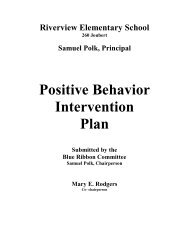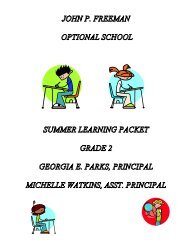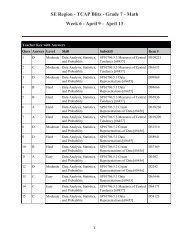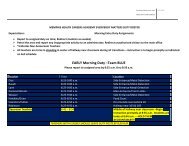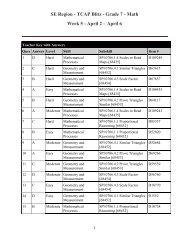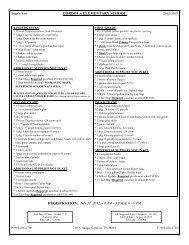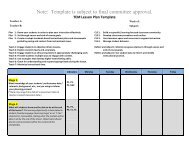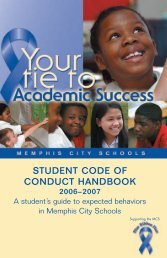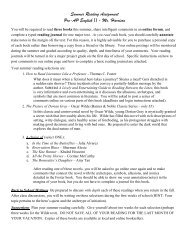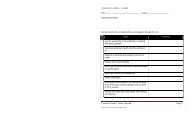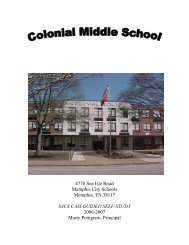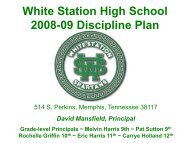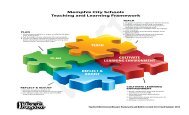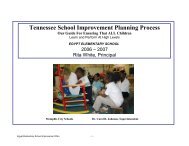ESL Strategies Chart w/ Methodologies
ESL Strategies Chart w/ Methodologies
ESL Strategies Chart w/ Methodologies
You also want an ePaper? Increase the reach of your titles
YUMPU automatically turns print PDFs into web optimized ePapers that Google loves.
Procedure:1. After reading, teacher and students select a purpose and topic(s) for a short writingactivity. Students participate in a pre-writing activity such as brainstorming, developcriteria for the written work, then free-write for about ten minutes on a topic related to thereading.2. Students code their written work with numbers instead of using their own names.3. Papers are collected by the teacher, and students are divided into groups of four or fiveand given the same number of coded papers.4. Everyone in each group reads all the papers assigned to their group. This is done byreading for a short timed interval, and then passing the papers around the circle andrepeating the process until all papers are read.5. Each group votes on the one or two papers that meet the criteria best, and explains theirchoice.6. The teacher tallies the results of the papers voted “best” on the chalkboard and studentsshare their ideas about how and why these papers are most effective in achieving thegiven purpose, e.g., organization of information, use of descriptive terms, persuasiveness,effectiveness in making a point.D1. Field TripsD. Other Interactive <strong>Strategies</strong>This strategy consists of a planned learning experience in the community for the student group toobserve, study, and participate in a real-life setting, using the community as a laboratory. Theinstructor and the students plan and structure the experience by preparing beforehand foractivities during the visit and then engage in follow-up activities after the trip.D2. K-W-L (Knows / Wants to Know / Learned)An introductory or pre-activity strategy that provides a defined structure for recalling and stating;What the student knows regarding a concept or a topic; what the student wants to know, andfinally lists what has been learned and / or what is yet to be learned. To use this strategy, thestudent lists all the information he / she knows or thinks he / she knows under the heading “WhatWe Know”; then, the learner makes an inventory of “What We Want to Know”, categorizing theinformation about the topic the student expects to use.D3. Role PlayIn describing learning strategies, Dale (1990) emphasizes that direct and purposeful experiencesare best for all students, especially LEP learners. For example, students can demonstratecomprehension of a story by role-play through retelling, using realia, visuals, and propspreviously demonstrated by the instructor.



